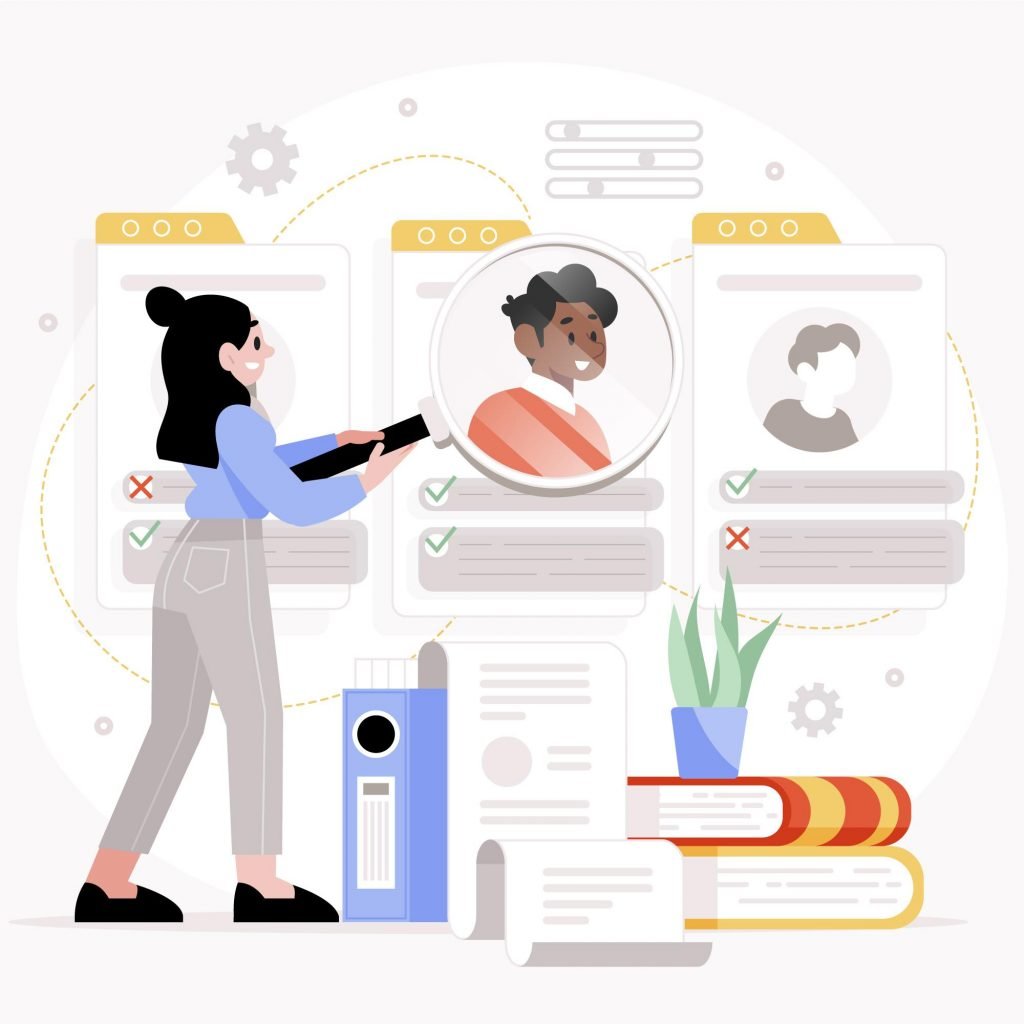In a landmark decision issued on June 29, 2023, the Supreme Court ruled that colleges and universities can no longer consider race as a factor in their student admissions, effectively ending the longstanding practice of affirmative action in education. Implemented in the 1960s, affirmative action aimed to address historical discrimination and promote equal opportunities for marginalized groups in the US, including African Americans, women, and other minority populations.
This ruling has far-reaching consequences that extend beyond the realm of higher education. Affirmative action also compelled employers to adopt measures to foster diversity, equity, and inclusion (DEI) in the workplace, such as targeted recruitment efforts and diversity training programs. While the court’s recent rulings do not have an immediate or direct impact on employers, they may face new scrutiny regarding their hiring practices.
“[The Students for Fair Admissions decision] does not address employer efforts to foster diverse and inclusive workforces or to engage the talents of all qualified workers, regardless of their background. It remains lawful for employers to implement diversity, equity, inclusion, and accessibility programs that seek to ensure workers of all backgrounds are afforded equal opportunity in the workplace.”
Charlotte Burrows, EEOC Chair
In light of these developments, this article aims to unpack the Supreme Court’s affirmative action ruling, offer predictions into its implications for businesses, and provide strategies for organizations to navigate this new landscape while upholding a commitment to DEI in the workplace.
Pressed for time? Here’s a quick summary…
- The Supreme Court determined that affirmative action admission policies in education are unconstitutional, raising concerns about potential implications for employment practices in the future.
- Although the ruling doesn’t directly impact employers, it is advisable for companies to allocate resources and prepare for potential legal action from critics of diversity policies.
- Employers can leverage several strategies to promote DEI in light of the court’s ruling, including expanding university recruiting efforts, building alternative talent pipelines, focusing on potential candidate skill sets, and considering renaming the term “diversity” in titles to mitigate potential litigation risks.
- Embracing diversity involves weaving DEI into all organizational practices, from training and mentorship programs to communication and wellness initiatives. By adopting a comprehensive approach, companies can foster an inclusive environment that values diversity in all aspects.
The 2023 Supreme Court Affirmative Action Ruling Explained
In a significant development on June 29, 2023, the Supreme Court issued two rulings regarding college admission policies at Harvard College and the University of North Carolina (UNC). The court determined, with votes of 6-2 and 6-3, respectively, that considering race as a factor in admissions violated the Equal Protection Clause of the 14th Amendment, effectively bringing an end to the practice of affirmative action in education.

These decisions were made in response to lawsuits initiated by Students for Fair Admissions (SFFA), a nonprofit organization that challenges race-based admission policies and promotes equal treatment for all students. SFFA accused Harvard and UNC of unlawful discrimination against Asian American and White applicants, who they claimed were disproportionally impacted by affirmative action policies.
Immediate Reactions & Predictions In The Business World
The Supreme Court’s decision on affirmative action has sparked concerns about its potential impact on DEI efforts in the workplace. While the EEOC reassures employers that the ruling does not directly impact them, experts are concerned that conservative groups will eventually target and challenge such initiatives in companies.
Additionally, there is apprehension that the ruling, although applicable to academic admissions, may lead companies to scale back DEI programs due to legal uncertainties, creating a “chilling effect.” This could potentially impact workforce composition and limit the pipeline of diverse talent.
“I worry that corporate counsels are going to be overly compliant. They struck it down in college admission, and even though we’re not doing college admissions, no one’s allowed to talk about race at all because we don’t want to get sued. That’s a huge mistake.”
Alvin Tillery, Professor of Political Science and Director of the Center for the Study of Diversity and Democracy at Northwestern University
However, many are hopeful that companies genuinely committed to diversity will find ways to continue their efforts. This may involve reframing practices and emphasizing compliance with non-discrimination requirements under the Civil Rights Act. Employee and consumer pressure for inclusive measures may also drive companies to maintain and strengthen their DEI commitments.
Implications For Employers & Hiring Practices
The term “affirmative action” can be ambiguous due to its differing application in the context of education and employment.
“Affirmative Action”: Two Opposing Definitions
| In Education | In Employment |
|---|---|
| The practice of considering race in admissions decisions. | The prohibition of consideration for race in decision-making, such as hiring and promotion, under Title VII of the Civil Rights Act. |
Private employers commit to “act affirmatively” to support and encourage diversity, fostering a work environment that celebrates differences. Therefore, they can continue their DEI efforts within the existing legal framework, ensuring compliance with non-discrimination requirements.
Nevertheless, the court’s recent decision indicates a higher likelihood of challenges to DEI practices in employment. It’s advisable to:
- Monitor legal developments, as future litigation may arise.
- Remain dedicated to fostering diverse, inclusive, and belonging environments in the face of increased scrutiny.
Despite concerns raised by the rulings, businesses can uphold their ideals and principles while navigating potential cultural and legal challenges.
5 Strategies For Navigating The New Landscape
Building DEI in the workplace plays a crucial role in dismantling systemic barriers, fostering a more equitable society, and driving overall organizational success. What strategies can employers leverage to promote DEI within the bounds of the ruling?
1. Expand University Recruiting Efforts

University administrators say discontinuing affirmative action will result in a notable decrease in the representation of Black and Hispanic students at many prestigious institutions. With the possibility of more racially homogenous student bodies, employers should prioritize expanding the range of schools from which they source talent. Monitoring the diversity of student populations at different institutions can allow companies to adjust their recruiting strategies and continue a robust pipeline of diverse candidates.
2. Build Alternative Talent Pipelines
Additionally, organizations may need to proactively build new diverse talent pools. This could include:
- Collaborations with community organizations, such as local non-profits that support underrepresented groups in the workforce;
- Establishment of apprenticeship programs; and,
- Partnerships with institutions, such as diversity-focused organizations, universities, or industry associations dedicated to promoting DEI.
These efforts can help ensure a continuous influx of diverse candidates and further enhance workforce representation and inclusion.
3. Shift From Pedigree To Potential

Job descriptions listing specific credentials might discourage candidates who possess the necessary skills but lack formal qualifications. Employers can move away from strict reliance on specific education and experience requirements, shifting the focus to skillsets and specialized capabilities. This will allow companies to identify talented individuals from a broader range of backgrounds.
4. Adjust Language & Titles
To mitigate potential litigation risks, experts recommend switching the use of the term “diversity” with phrases like “Title VII compliance,” highlighting compliance with equal employment opportunity laws. Employers may also consider using alternative titles such as “Chief Transformation Officer” instead of “Chief Diversity Officer.” These adjustments can align language with legal requirements while maintaining a commitment to diversity and inclusion.
5. Maintain A Measured Approach
While concerns about the ruling’s impact on workplace DEI programs exist, employers must adopt a balanced perspective. The decision did not overturn affirmative action in the workplace or outlaw non-affirmative action-based DEI initiatives. Employers can continue promoting DEI within legal boundaries, focusing on non-discriminatory practices and fostering inclusive work environments.

Simultaneously, companies should prepare for increased legal action by critics of diversity policies. Allocating time and finances to address potential legal challenges will help companies navigate the evolving landscape of workplace diversity initiatives.
DEI Initiatives In The Workplace: Beyond Affirmative Action
Embracing diversity goes beyond hiring and recruiting, encompassing a wide array of practices to promote DEI in the workplace. By harnessing a range of initiatives, organizations can create an environment that not only attracts diverse talent but also nurtures their growth and ensures equal opportunities for all.
Implement Anti-Bias Training
Providing corporate training sessions and online tools can help employees understand how stereotypes subconsciously influence decision-making. By increasing awareness of biases, employees are less likely to act on them.
Invest In Employee Resource Groups (ERGs)
ERGs provide a safe space for employees with shared interests, identities, and experiences to connect and support each other. These groups help create a sense of belonging and promote inclusivity in the workplace.
Offer Mentorship Programs
Mentoring programs promote both professional growth and leadership development, particularly for underrepresented groups who may have fewer role models in senior positions. By fostering mentor-mentee relationships, organizations can build pipelines for diverse leadership, leading to increased representation and employee retention.
Weave DEI Into Wellness Programs
While employee wellness and DEI initiatives are often disconnected, organizations can take several steps to ensure their wellness programs provide all populations with an equal opportunity to thrive. These include:
- Offering benefits that assist underrepresented groups (e.g., fertility benefits, which are particularly important for LGBTQ+ employees who face additional barriers to family-building);
- Offering diverse wellness providers; and,
- Utilizing inclusive images and language in promotional materials.
Leverage Two-Way Communication
Open and honest communication is crucial for addressing workplace inequities. Companies should strive for transparency, especially in the promotion process, by establishing clear criteria for advancement and ensuring those responsible for developing these criteria are trained in DEI principles. Seeking feedback through DEI-specific surveys demonstrates that employee opinions and experiences are valued.












